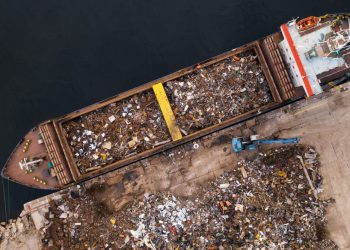Rear Adm. John Nadeau, assistant commandant for prevention policy, attended Connecticut Maritime Association’s Shipping 2019 Conference and focused on the countdown to compliance of IMO 2020 and the concerns around it, such as availability, quality, and cost.
Nadeau’s presentation ‘Countdown to Compliance of IMO 2020 and What’s Next’, was based on the challenges around the sulphur limit, highlighting that predictions and speculations made by economists, various parts of the shipping community, and trade groups have been repeatedly made.
Concerning availability he referred to the ECA areas the US has from 2015, stating that the availability of compliant fuel has not been a major issue. U.S. refineries have completed significant upgrades to their infrastructure to accommodate the expected demand. Yet, they are confident that in 2020 here in the U.S., availability issues will be very limited.
For ship owners, one of the keys to this transition is careful voyage planning that consider bunker availability to the maximum extent, whenever and wherever possible.
Concerning quality John Nadeau also focused on the fuel oil quality. The implications can be significant and that removal of non-compliant fuel or “de-bunkering” involves finding someone who will accept the fuel, possibly tank cleaning, and costly delays – it is expensive and difficult.
Concerning cost he highlighted that there has been a great deal of estimates regarding the cost and how long it will take for prices to normalize and the market to adjust.
USCG is aware of the fact that the cost differential between the different types of fuel oil may be quite significant, and this concerns the Coast Guard when it comes to compliance.
They still find cases where a ship’s crew bypassed their Oily Water Separator to, presumably, cut costs.
However, despite the challenges, the USCG expects that the majority of the owners and operators will be compliant with the new requirements.
With regard to compliance and enforcement here in the U.S., you can expect the status quo from the Coast Guard. We are already enforcing the ECA. And as a party to MARPOL Annex VI, we are obligated to enforce the 2020 global cap and will do so using the mature and well developed inspection and enforcement regime we have in place.
… John Nadeau commented.
In addition, although 2020 seems difficult, the industry and the Coast Guard have a lot on their plate in the coming years. With $4.6 trillion in economic activity flowing through the U.S. ports and waterways, they have to keep up with technological advances in the maritime industry.
He concluded that the USCG is engaged in IMO’s regulatory scoping exercise for autonomous ships, where the current goal is to identify areas where the current regulatory scheme may contain gaps or prevent autonomous operation.






























































